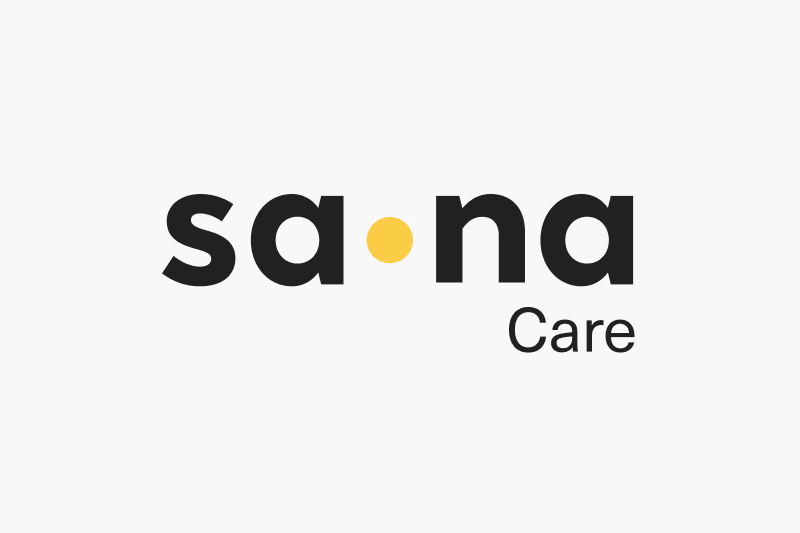Health insurance options for small companies with less than 10 employees

You might be wondering: What counts as a small company, or small business?
The Small Business Administration (SBA), a federal agency dedicated to assisting small businesses, defines a small business as having a maximum of anywhere from 250 to 1,500 employees depending on the industry.
However, when discussing health insurance, the Affordable Care Act’s (ACA’s) definition of a small business is more relevant. The ACA, a healthcare reform law enacted in 2010 with the goal of expanding access to affordable health insurance, defines a small employer as having at least one but fewer than 50 full-time employees (FTEs). (Note that states may expand their small group markets to include employers with 50 to 100 FTEs, which California, Colorado, New York, and Vermont have done.)
The ACA is still in effect today and includes legal requirements that every small business owner should be aware of — for instance, the employer mandate under the ACA requires large employers (in most states, those with 50 or more FTEs) to offer health insurance to employees and their dependents. Small employers are not subject to the employer mandate.
This means that microbusinesses — defined by the SBA as those with fewer than ten employees — are not required to offer employer-sponsored health insurance. But many microbusinesses choose to do so because they recognize that offering health insurance benefits will help them attract top talent, retain employees, and set them apart from their competitors.
Defining an employee for health insurance purposes
The ACA provisions only apply to applicable large employers (ALEs) with 50 or more full-time employees. Employers with fewer than 50 full-time employees, including full-time equivalent employees, on average during the prior year are not ALEs and are therefore considered small employers.
These groups may choose to offer health insurance to employees but are not required to by law. They may be eligible for the small business healthcare tax credit if they choose to offer a health plan from the Small Business Health Options Program (SHOP), a health insurance marketplace for small business owners that was created under the ACA.
According to the IRS, “Whether an employer is an ALE is determined each calendar year, and generally depends on the average size of an employer’s workforce during the prior year.” To determine how many employees you have, you add up the number of full-time employees plus full-time equivalent employees you have. These are defined as follows by the IRS:
- Full-time employee: “an employee who has on average at least 30 hours of service per week during the calendar month, or at least 130 hours of service during the calendar month”
- Full-time equivalent employee: “a combination of employees, each of whom individually is not a full-time employee, but who, in combination, are equivalent to a full-time employee”
This Employer Shared Responsibility Provision Estimator can help you determine how many full-time employees (including full-time equivalent employees) you have and whether you are an ALE or a small employer. If you have fewer than ten employees, you are considered a microbusiness.
Types of health insurance solutions available for small companies
When it comes to health insurance solutions for small companies, including microbusinesses, there are two major categories to consider: group health insurance and health reimbursement arrangements (HRAs). Below, we go into these two options.
Group health insurance
According to HealthCare.gov, group health insurance is “a health plan offered by an employer or employee organization that provides health coverage to employees and their families.” Group health insurance is what ALEs are required to purchase and offer to employees, but small employers can choose to purchase it if they have at least one FTE other than the business owner and their family members.
There are different types of group health insurance, each with pros and cons:
Fully funded group health insurance
Fully-funded group health insurance refers to an arrangement in which the employer pays a fixed monthly premium to a health insurer. In exchange, the insurer takes on the financial risk of providing health coverage to employees and administering the plan.
This is the most well-known type of group health insurance offered by the legacy insurance carriers in the U.S. The so-called BUCAs (Blue Cross Blue Shield, United Healthcare, Cigna, and Aetna) often inflate the price of these plans to ensure large profits and account for the possibility of catastrophic claims.
- Pros: Eliminates risk, makes budgeting predictable
- Cons: Expensive, subject to arbitrary premium hikes year-over-year
Self-funded group health insurance
Self-funded group health insurance is a type of plan in which the employer collects premiums from plan enrollees and then pays employees’ and dependents’ medical claims as they occur. Employers can self-administer these plans or hire a third-party administrator to handle plan management.
This option is not advisable for microbusinesses. It works well for large companies because their employee populations are large enough to withstand the risk that is inherent in the model. While a single catastrophic claim would not wipe out the health insurance budget of a company with tens of thousands of employees paying into its claims fund, an exorbitant claim could decimate the budget of a microbusiness.
- Pros: Highly customizable, cheaper for low-risk populations
- Cons: Risky, administratively burdensome
Level-funded group health insurance
Level-funded group health insurance is a type of self-insurance that takes the risk out of the model by placing a cap, or “level,” on the amount an employer could owe in a given plan year. Under this model, the employer pays a fixed monthly sum to the insurer based on the employee population’s expected claims costs. If claims come back higher than expected, stop-loss insurance kicks in to cover the excess, so the employer will never have to pay more than they budgeted.
The insurer handles plan administration on the employer’s behalf, just as they would on a fully-funded plan. However, level-funded plans tend to be more affordable than fully-funded plans, particularly for groups with lower than average medical costs (since most of the price is driven by an estimate of your group’s claims cost).
Some legacy carriers offer level-funded plans, but there are insurtech companies such as Sana that specialize in level-funded plans for small businesses. Generally, going with a modern health insurance company over a legacy carrier means lower costs and a more streamlined, automated experience for plan administrators.
- Pros: Eliminates risk, affordable, customizable, makes budgeting predictable
- Cons: May be priced less competitively for high-risk groups
Group health insurance through a PEO
Group health insurance through a professional employer organization (PEO) is a good option for microbusinesses that want to outsource time-consuming HR functions such as payroll, benefits administration, tax filing, and compliance.
A PEO serves as the official employer of record for multiple small groups and takes on their HR tasks. This allows the collective group to secure large-group health insurance rates that may be more competitive than any one group could secure on its own. On top of the cost of the health plan, PEOs charge businesses a monthly fee — often a flat fee per employee per month (PEPM) — for their services.
- Pros: Relieves small businesses of their HR burden, can provide access to less expensive health insurance via large-group pricing
- Cons: Adds a PEPM administrative fee on top of health insurance costs, limits health plan options and customizability, more expensive for some groups than level-funding
Group health insurance from SHOP
Buying a group health insurance plan from SHOP is the only way for a small employer to be eligible for the small business healthcare tax credit. This credit can be significant — at most, 50% of the premiums your small business pays for two consecutive years. To qualify, you must also have fewer than 25 FTEs and pay average wages of less than $53,000 per year per FTE (indexed annually for inflation).
There are various types of group health insurance plans available on SHOP, including fully-funded and level-funded options. However, SHOP plans are no longer available in every state, and SHOP is no longer a user-friendly marketplace that allows employers to browse and compare plan options. Employers must work with a SHOP-registered insurance agent or contact participating insurance companies directly to access SHOP plans.
- Pros: Possible tax credit
- Cons: Not widely available
For a full breakdown of the group health insurance options listed here, read 4 best health insurance options for small business in 2023.
Health reimbursement arrangement (HRA)
For small employers who do not yet have the budget to offer group health insurance, a health reimbursement arrangement (HRA) can be a good option to let employees know you are committed to helping offset their medical expenses.
Specifically, a qualified small employer health reimbursement arrangement (QSEHRA) is the type of HRA that employers with less than 50 FTEs can offer to help employees pay for their healthcare expenses, such as monthly premiums. A QSEHRA allows employers to decide how much they want to reimburse per employee per year, up to an annual maximum set by the IRS. For 2023, the maximum payments and reimbursements under a QSEHRA are $5,850 for self-only coverage and $11,800 for family coverage.
Employers can claim a tax deduction for the reimbursements made through the QSEHRA, and employees receive the reimbursements tax-free. To ensure your QSEHRA is compliant, it is wise to partner with a third-party HRA administrator who can review and approve the transactions.
Note that it is also an option to offer group health insurance to full-time employees and an HRA to part-time employees at the same time.
Related: Best health insurance options for small businesses in 2023
Health insurance requirements for small companies
As noted above, small companies are not required by law to offer health insurance to employees.
A small employer is eligible to offer group health insurance if it:
- Is considered a legal business entity according to its state’s regulations
- Has at least one qualified full-time or full-time equivalent employee other than the business owner and their dependent(s)
Small businesses that choose to offer group health insurance should be aware of the following requirements:
In order to qualify for the small business healthcare tax credit, small employers are required to pay at least 50% of the monthly premiums for their employees (but can choose to cover a higher percentage). Some insurance carriers and states also require employers to cover at least 50% of the premium for employee-only coverage, regardless of tax credit eligibility.
Additionally, most insurers require a minimum percentage of employees to participate in the group health insurance plan — usually around 70%.
If any employer (small or large) does offer health insurance, they must offer it to all full-time employees. While the full-time equivalent employee calculation counts toward the total number of employees you have, the individual part-time employees that factor into the calculation are not full-time — which means it is not mandatory to offer them health insurance. However, if you offer health coverage to any part-time employees, you must offer it to all of them.
Under the ACA, ALEs must offer minimum essential coverage to full-time employees’ legal spouses and dependent children, who must be covered through age 26. Since small employers do not have to offer group health insurance at all, they also do not have to cover dependents — but small business owners that do offer health insurance to employees can choose whether or not to contribute to dependents’ health insurance premiums. That said, most health plans do allow qualified dependents to be added, so small group employees will be able to add dependents to the plan whether or not their employer chooses to contribute to the premium.
Benefits of offering health insurance to your employees
Health insurance is the employee benefit that workers value most highly. It is considered a “staple benefit” — no longer a nice-to-have, but a need-to-have. Employees rely on their jobs to provide medical coverage for their families because participating in employer-sponsored health insurance is usually far more affordable than acquiring health insurance as an individual.
This is why it is so important for small businesses to offer benefits even though they are not required by law to do so. By choosing not to offer health benefits to employees, you are forgoing the opportunity to attract the best and the brightest in your field, whatever it may be — because chances are that the top candidates will choose a job at a company that offers health insurance over yours.
Beyond attracting top talent, health insurance has a profoundly positive effect on employee retention and performance. Healthy employees who feel cared for are more engaged and productive at work, as well as less likely to leave their jobs in search of greener pastures. 66% of small business owners say that they offer health benefits in order to recruit and retain the best employees.
There are tax benefits to offering health insurance, too — all funds you put toward employees’ and dependents’ health insurance premiums are considered a business expense under federal and state tax law and can be written off.
Related: Businesses with fewer than 10 employees may be warming to healthcare benefits
Frequently asked questions about health insurance for small companies
To qualify for group health insurance, an employer must have at least one qualified full-time or full-time equivalent employee other than the business owner and their dependent(s).
Most insurers require about 70% of eligible employees to participate in a small employer group health insurance plan. The exact percentage may vary from one insurance company to another.
According to the IRS, in order for a shareholder who is the sole employee of an S-corp to claim an above-the-line deduction, the health insurance premiums must ultimately be paid by the S-corp and must be reported as taxable compensation in the shareholder’s W-2.
Yes, employers with less than 50 employees are exempt from the employer mandate under Obamacare, meaning they are not required by law to offer health insurance coverage to employees.
Small employers should look for plan flexibility, plan transparency, virtual care options, mental health coverage, and alternative pricing models such as reference-based pricing, to name a few. Learn more about what small business owners should look for in group health insurance plans.






